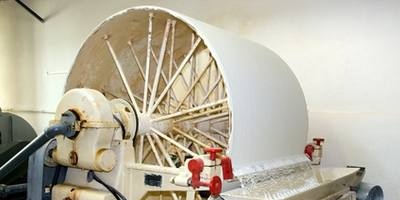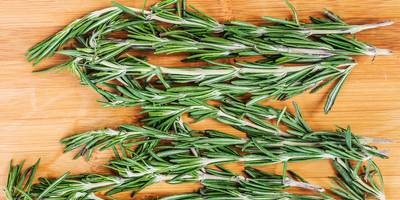|
 According to connoisseurs, there is no better place for drying cocoa than street asphalt. And if it is not yet customary in all countries to pour bags of chocolate beans directly onto the street, in Ecuador this has been practiced since asphalt appeared there. According to connoisseurs, there is no better place for drying cocoa than street asphalt. And if it is not yet customary in all countries to pour bags of chocolate beans directly onto the street, in Ecuador this has been practiced since asphalt appeared there.
Urban transport had to make room, yielding half of the roadway to the divine product (as Linnaeus called it!). And, stirring a fragrant drink of the tropics with a spoon in a glass, we do not always imagine that he has been where cars rush, dragging a train of dust and soot behind him, and where horses leave their "business cards". However, there is nothing special here. After all, ordinary grain is processed right on the ground using currents. And the horses are there too. And we eat bread, and nothing ...
You cannot not dry the beans. In the tropics, and even in humid ones, there is the kingdom of mold. They act quickly. Gape for a day or two - and throw the product. But the cocoa tree itself feels good in the humid bathing heat. Moreover, it climbs into the lowest floor of the tropical forest, where the air is still and constant stuffiness.
Everything about cocoa is unusual. It's not like other trees. The leaves do not appear all at once, as in our greenhouses, and not one after another, but, as it were, in explosions, in bulk. And then a break. Then another explosion and another break, for three or four weeks. The behavior of flowers is even stranger. They stick around not the branches, but the trunk itself. Scientists believe this is a saving mode. If you transport juices to them along the branches, then there will be an overconsumption of energy. However, others have a simpler reasoning. Melon-like fruits are too heavy to grow on branches. If so, all the branches would break off.
Flowers smell like manure. This is necessary to attract flies. It is they who are entrusted with pollination. True, they are not very useful. One flower out of two hundred is pollinated. But in general, all the same, fifty pieces of fruit grow on one tree. They are ribbed, like small melons or overripe brown cucumbers.
 The most nutritious thing in fruits is seeds. They are similar to the grains of regular beans. Therefore, no one calls them seeds, but everyone calls them beans. Chocolate, which is obtained from beans, maintains strength in the most critical situations. But by a strange coincidence, the beast split into two camps. Some people like the sour pulp of the fruit. And they eat it, and the most nutritious - the beans - scatter around the sides. This is what monkeys and squirrels do. Of course, this is very beneficial for the tree. Perhaps the monkeys would not have acted so rashly if the beans were not bitter like wormwood. Bitterness is nature's calculation to keep the seed fund from squandering. If only this whole company knew what a delightful product would come out of bitter seeds, when they were conjured a little over them! People, of course, didn't know either. And how they came up with chocolate is still a mystery. The secret of the chocolate smell has not yet been deciphered. Raw beans don't smell like any chocolate. They do not smell. Only bitter. The most nutritious thing in fruits is seeds. They are similar to the grains of regular beans. Therefore, no one calls them seeds, but everyone calls them beans. Chocolate, which is obtained from beans, maintains strength in the most critical situations. But by a strange coincidence, the beast split into two camps. Some people like the sour pulp of the fruit. And they eat it, and the most nutritious - the beans - scatter around the sides. This is what monkeys and squirrels do. Of course, this is very beneficial for the tree. Perhaps the monkeys would not have acted so rashly if the beans were not bitter like wormwood. Bitterness is nature's calculation to keep the seed fund from squandering. If only this whole company knew what a delightful product would come out of bitter seeds, when they were conjured a little over them! People, of course, didn't know either. And how they came up with chocolate is still a mystery. The secret of the chocolate smell has not yet been deciphered. Raw beans don't smell like any chocolate. They do not smell. Only bitter.
To get a fragrant masterpiece, they do this: long before drying on the asphalt, beans removed from a tree are threshed. The fruit is hit on the table. It breaks in two. A clip of beans falls onto the table. On them - part of the adhering pulp. The beans are raked into large heaps like compost. Cover with banana leaves. And leave for a while. The heap soon warms up like a shock of raw hay. The fermentation process takes place in it. But the cocoa flavor hasn't appeared here yet. There is only preparation for it.
From the piles, the beans go to the asphalt, to the dryer. And before drying, another operation was performed, which was called the Dance of Cocoa. Red clay was poured on the ground, and beans on it. They were sprinkled with water from above. Then they took off their shoes and began to stomp barefoot, holding hands, in time to the rhythm. Here and the song arose.So, swaying from side to side, the dance group thoroughly shuffled the chocolate riches with bare feet, after which the beans took on a delicious color of pure gold. What for? For the chocolate itself, this ritual is absolutely useless, if not harmful. But outwardly, the beans became more attractive, and they were more readily bought. Commerce!
But back to the asphalt. The dried beans are harvested and roasted. It is here that, finally, the aroma that attracts half of humanity appears. Both children and adults. All that remains is to grind the fried, squeeze out the oil and grind the remaining cake into flour. And the cocoa powder is ready.
You need, of course, to be an experienced craftsman in order to observe all the subtleties of the procedures. It happens that the planters will collect slightly unripe fruits. Seeds in piles will not warm up properly. And at the finish the chocolate will smell like ... ham! If overripe fruits are harvested, the aroma will be even worse. As soon as the beans are not dry enough, aspergillus gray mold settles - and the chocolate smells ... soap! If, instead of gray, a yellow aspergillus settles, then it’s quite a disaster. Yellow gives off poison - aflatoxin.
Therefore, good cocoa powder has always been valued dearly. And there were many people who like to mix something in, add weight. Moscow traders used to mix in wheat flour. Then the powder turned whitish.
But let's return to our native cocoa penates - to the island of Trinidad. And here the precious product could not be ignored. Immediately there were many hunters for free pleasure. Fruits from trees were stolen without a twinge of conscience, but they could not catch the thief. He wielded at night. Not that much of the fruit was missing, but farmers were enraged by the very mystery of the abductions. Finally, the culprit was caught. It turned out to be a small rodent - a tree rat. In fact, the size of the thief was far from a rat, he was no larger than an ordinary vole mouse and generally looked like her. And he climbed trees perfectly.
However, having caught the thief, they did not learn much. It was necessary to find out where the kidnapper's base is located, his nest. The farmers gathered for a general council. One believed that the thief lived in an earthen hole, like many ordinary mice. Another suspected - were it in the stems of the banana? Because the violator was caught stealing these heavenly fruits. The third recalled the hollows of the trees. But they were all wrong. The tree rat was nowhere to be found.
Then they decided to paste over the trunks of several trees with white paper. The calculation is as follows: the thief will come down from the tree and leave his footprints. Morning has come. The marks remain on the trunks of the erythrina bean tree, which is planted to protect delicate cocoa from the sun. True, the erythrin crown is light and airy, like tulle curtains, but settlers are attached to it, the relatives of pineapple are bromeliads. They grow in dense masses, and it is in these airy thickets that the thieves of cocoa fruits build refuge.
Farmers began to search for erythrin on the trunks, and a thief was found on every third tree. He was resting calmly after the night's work. Nearby lay only the remaining husk. There were no signs of other family members. Apparently, the crowns served as a temporary shelter, a transshipment base, from where the looted products could be shipped to a more remote and safe place.
 However, if only rodents owned the plantation, the farmers would not be particularly worried. Even the ubiquitous parrots that take part of the crop do not cause much annoyance. Another enemy is much more dangerous. All over the world it is called briefly, like the clicking of a whip: "Give-back!" In Russian "dying". No one has yet identified the main reason why cocoa dies ahead of schedule. Dai-back showed himself for the first time a hundred years ago. Many scientists undertook to solve a difficult problem, and each found his own reason. However, if only rodents owned the plantation, the farmers would not be particularly worried. Even the ubiquitous parrots that take part of the crop do not cause much annoyance. Another enemy is much more dangerous. All over the world it is called briefly, like the clicking of a whip: "Give-back!" In Russian "dying". No one has yet identified the main reason why cocoa dies ahead of schedule. Dai-back showed himself for the first time a hundred years ago. Many scientists undertook to solve a difficult problem, and each found his own reason.
In Africa, the north wind was blamed harmattan. It swoops in when the dry season and New Years come. A little earlier or a little later. Dries up broad cocoa leaves, and they curl up like a fire. And they fall.In the 1920s, when forests were cut down on the Gold Coast, the harmattan completely dispersed and destroyed many plantations.
Trying to protect cocoa from the wind with resistant trees. The already mentioned erythrin is planted. The wind dies down a little, but now, in a calm, another, more dangerous pest appears - late blight palm, a close relative of the potato mushroom, which destroyed potatoes in Europe in the last century. Phytophthora transforms bronze cocoa melons into black, rot-smearing melons. "Black bean" - the Africans are annoyed and dump the future chocolate in the trash. True, in the world so far this mushroom takes one tenth of the harvest, but in Cameroon - 9/10! Farmers are sadly ironic: "The best remedy against the" black bean "is not to plant cocoa at all!" And replace the chocolate tree with a banana.
Other experts blame the soil for everything. You look - and they are right in their own way. Closer to the huts, where various household rubbish is dumped under the trees, the chocolatier gets sick less and lives longer. Garbage quickly composts and fertilizes the plantation. Still others remember geography. Cocoa lives in different ways in different countries. In Indonesia, it lives up to seventy years. At home, who burned forests on the slopes of the mountains and received fertilizer in the ashes from a fire, which was enough for one generation of very profitable coffee trees - what did they care that tropical downpours then washed away the now defenseless topsoil, leaving behind only naked rocks! "
And now, in our days, I had to visit Cuba. I saw with my own eyes what the great philosopher wrote about. I saw black plastic bags lying along the roads, stuffed with red tropical armor in Brazil, up to eighty. And on the island of Trinidad - up to two hundred! True, old trunks give less yield, but farmers are sorry to uproot such patriarchs. We are used to them. They are like family. As family members. But their diseases also affect them less.
A. Smirnov. Tops and roots
|
 According to connoisseurs, there is no better place for drying cocoa than street asphalt. And if it is not yet customary in all countries to pour bags of chocolate beans directly onto the street, in Ecuador this has been practiced since asphalt appeared there.
According to connoisseurs, there is no better place for drying cocoa than street asphalt. And if it is not yet customary in all countries to pour bags of chocolate beans directly onto the street, in Ecuador this has been practiced since asphalt appeared there. The most nutritious thing in fruits is seeds. They are similar to the grains of regular beans. Therefore, no one calls them seeds, but everyone calls them beans.
The most nutritious thing in fruits is seeds. They are similar to the grains of regular beans. Therefore, no one calls them seeds, but everyone calls them beans. 

































